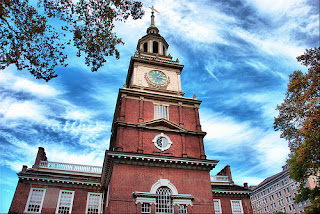Monday, August 27, 2012
Sunday, August 26, 2012
Thursday, August 9, 2012
Saturday, August 4, 2012
Stephen Emmott's views on human population
Emmott
is a professor of
computing at Oxford University and head of Microsoft's Computational
Science Laboratory in Cambridge. His lab is devoted to finding new
techniques and ideas for solving key scientific problems. One of his
research groups works on small-scale issues including the make-up of
living cells and includes immunologists and neuroscientists. Another
group is focused on global problems including the carbon cycle and is
made up of plant biologists and marine ecologists.
The
global population
was 1 billion in 1800 and 4 billion in 1980.
It
will probably have grown to 10 billion by the end of this century.
The
demand for food
will have doubled by 2050.
Food
production already accounts for 30% of greenhouse gases – more than
manufacturing or transport.
More
food needs more land, especially when the food is meat.
More
fields mean fewer forests, which means even more carbon dioxide in
the atmosphere, which means an even less stable climate, which means
less reliable agriculture – witness the present grain crisis in the
US.
It
takes 3,000 litres of water to make a burger (the UK eats 10bn
burgers a year).
A
world population of 10 billion will need 960 new dams, each of them
the size of the world's largest in China's
Three Gorges, plus 15,000 nuclear power stations and/or 11m wind
farms.
The
great objective of intergovernmental action, such as it is, has been
to restrict the rise in average global temperature to no more than
2C, but a growing body of research suggests a warming by 6C is
becoming more and more likely.
The
world will become "a complete hellhole" riven by conflict,
famine, flood and drought.
Go
to a climate
change conference these days, and, as well as all the traditional
attendees, there will usually be a small detachment of the
forward-looking military.
What's
to be done?
Emmott
takes us through the ideas offered by "the rational optimists"
who believe that, faced with the species' near extinction, human
inventiveness will engineer a solution.
Desalination
plants, a new green revolution, seeding the oceans with iron filings
to absorb more CO2: all of these threaten to produce as many problems
as they solve.
He
believes the only answer is behavioural change.
We
need to have far fewer children and consume less.
How
much less?
A
lot less; two sheets of toilet paper rather than three, a Prius
instead of a Range Rover – that kind of sacrifice won't really do
it.
And
does he believe we're capable of making this necessarily far bigger
curb on our desires?
Not
really.
He
describes himself as a rational pessimist.
If
a large asteroid were on course to the Earth and we knew when and
where it would hit – say France in 2022 – then every government
would marshal its scientific resources to find ways of altering the
asteroid's path or mitigating its damage.
But
there is no asteroid.
The
problem is us.
Recently
he asked one of his younger academic colleagues what he thought could
be done.
"Teach
my son how to use a gun," said the colleague.
Text adapted from theguardian
Questions
Does Emmott think
the world is overpopulated?
Who are the
"rational optimists"
Emmott castigates?
Is
there a solution to overpopulation according to Emmott?
Friday, August 3, 2012
United States immigration 1821-2001
| Decade | Number of Immigrants |
| 1821-1830 | 143,439 |
| 1831-1840 | 599,125 |
| 1841-1850 | 1,713,251 |
| 1851-1860 | 2,598,214 |
| 1861-1870 | 2,314,824 |
| 1871-1880 | 2,812,191 |
| 1881-1890 | 5,246,613 |
| 1891-1900 | 3,687,564 |
| 1901-1910 | 8,795,386 |
| 1911-1920 | 5,735,811 |
| 1921-1930 | 4,107,209 |
| 1931-1940 | 528,431 |
| 1941-1950 | 1,035,039 |
| 1951-1960 | 2,515,479 |
| 1961-1970 | 3,321,677 |
| 1971-1980 | 4,493,314 |
| 1981-1990 | 7,338,062 |
| 1991-2000 | 1 9,095,417 |
| Source: 2001 Statistical Yearbook of the Immigration and Naturalization Service | |
Subscribe to:
Posts (Atom)








